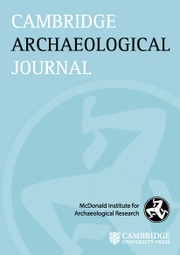Article contents
Homer's Entangled Objects: Narrative, Agency and Personhood In and Out of Iron Age Texts
Published online by Cambridge University Press: 24 October 2013
Abstract
In recent years, material culture studies have come to embrace contemporary Melanesia and European prehistory, but not classical archaeology and art. Prehistory is still thought, in many quarters, to be intrinsically more ‘ethnographic’ than historical periods; in this discourse, the Greeks (by default) become proto-modern individuals, necessarily opposed to Melanesian ‘dividuals’. Developments in the study of the Iron Age Mediterranean and the world of Homer should undermine such stark polarities. Historic and proto-historic archaeologies have rich potential for refining our notions both of agency and of personhood. This article argues that the forms of material entanglements we find in the Homeric poems, and the forms of agency (sensu Gell 1998) that we can observe in the archaeological record for the Early Iron Age of Greece (broadly 1000–500 bc) are of the same kind. The agency of objects structures Homeric narrative, and Homeric descriptions allow us precisely to define Homeric ‘human–thing entanglement’. This form of ‘material entanglement’ does not appear in the Aegean world before 1100 BC.
- Type
- Articles
- Information
- Copyright
- Copyright © The McDonald Institute for Archaeological Research 2013
- 14
- Cited by


